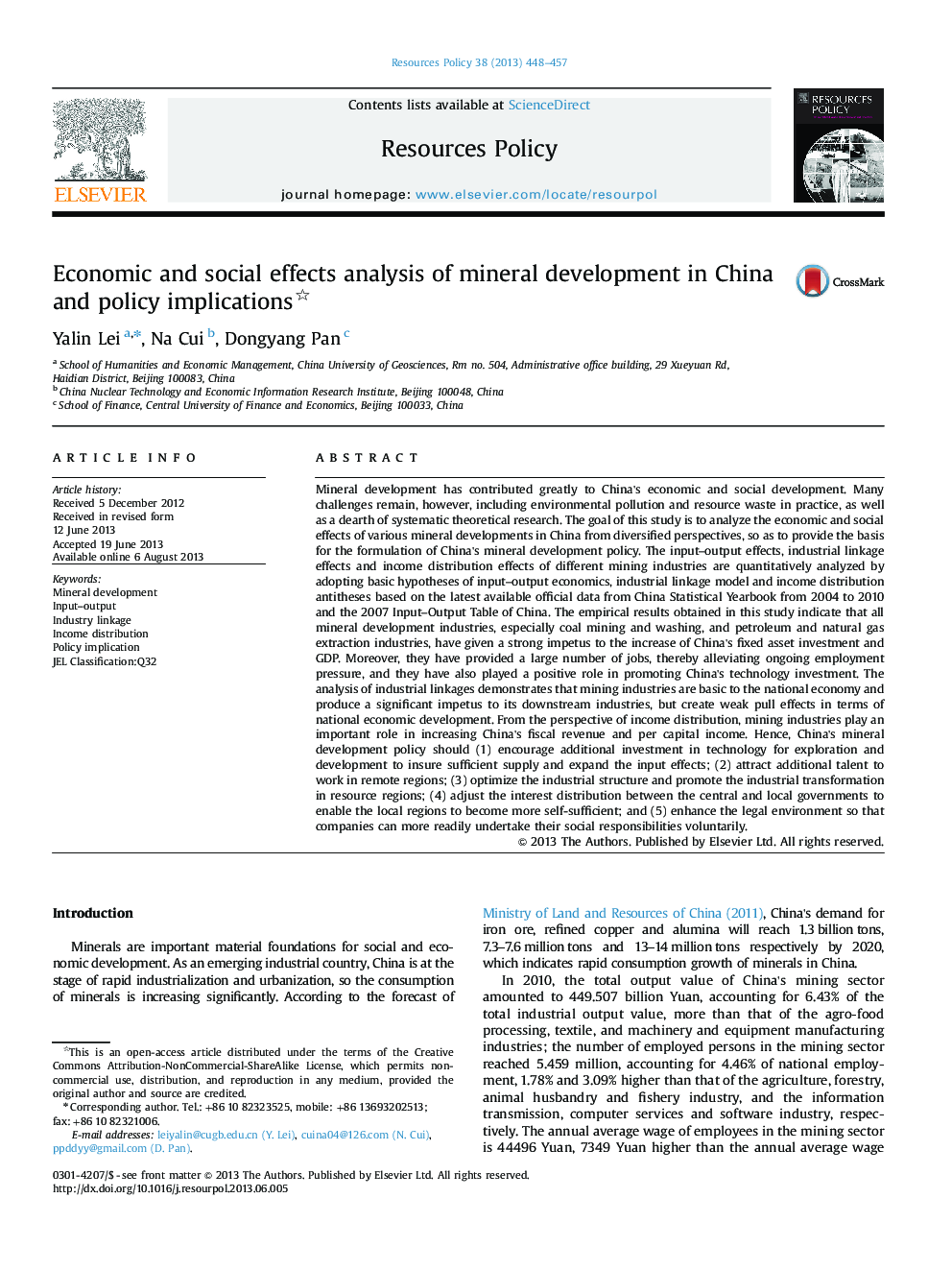| Article ID | Journal | Published Year | Pages | File Type |
|---|---|---|---|---|
| 10484037 | Resources Policy | 2013 | 10 Pages |
Abstract
Mineral development has contributed greatly to China's economic and social development. Many challenges remain, however, including environmental pollution and resource waste in practice, as well as a dearth of systematic theoretical research. The goal of this study is to analyze the economic and social effects of various mineral developments in China from diversified perspectives, so as to provide the basis for the formulation of China's mineral development policy. The input-output effects, industrial linkage effects and income distribution effects of different mining industries are quantitatively analyzed by adopting basic hypotheses of input-output economics, industrial linkage model and income distribution antitheses based on the latest available official data from China Statistical Yearbook from 2004 to 2010 and the 2007 Input-Output Table of China. The empirical results obtained in this study indicate that all mineral development industries, especially coal mining and washing, and petroleum and natural gas extraction industries, have given a strong impetus to the increase of China's fixed asset investment and GDP. Moreover, they have provided a large number of jobs, thereby alleviating ongoing employment pressure, and they have also played a positive role in promoting China's technology investment. The analysis of industrial linkages demonstrates that mining industries are basic to the national economy and produce a significant impetus to its downstream industries, but create weak pull effects in terms of national economic development. From the perspective of income distribution, mining industries play an important role in increasing China's fiscal revenue and per capital income. Hence, China's mineral development policy should (1) encourage additional investment in technology for exploration and development to insure sufficient supply and expand the input effects; (2) attract additional talent to work in remote regions; (3) optimize the industrial structure and promote the industrial transformation in resource regions; (4) adjust the interest distribution between the central and local governments to enable the local regions to become more self-sufficient; and (5) enhance the legal environment so that companies can more readily undertake their social responsibilities voluntarily.
Related Topics
Physical Sciences and Engineering
Earth and Planetary Sciences
Economic Geology
Authors
Yalin Lei, Na Cui, Dongyang Pan,
